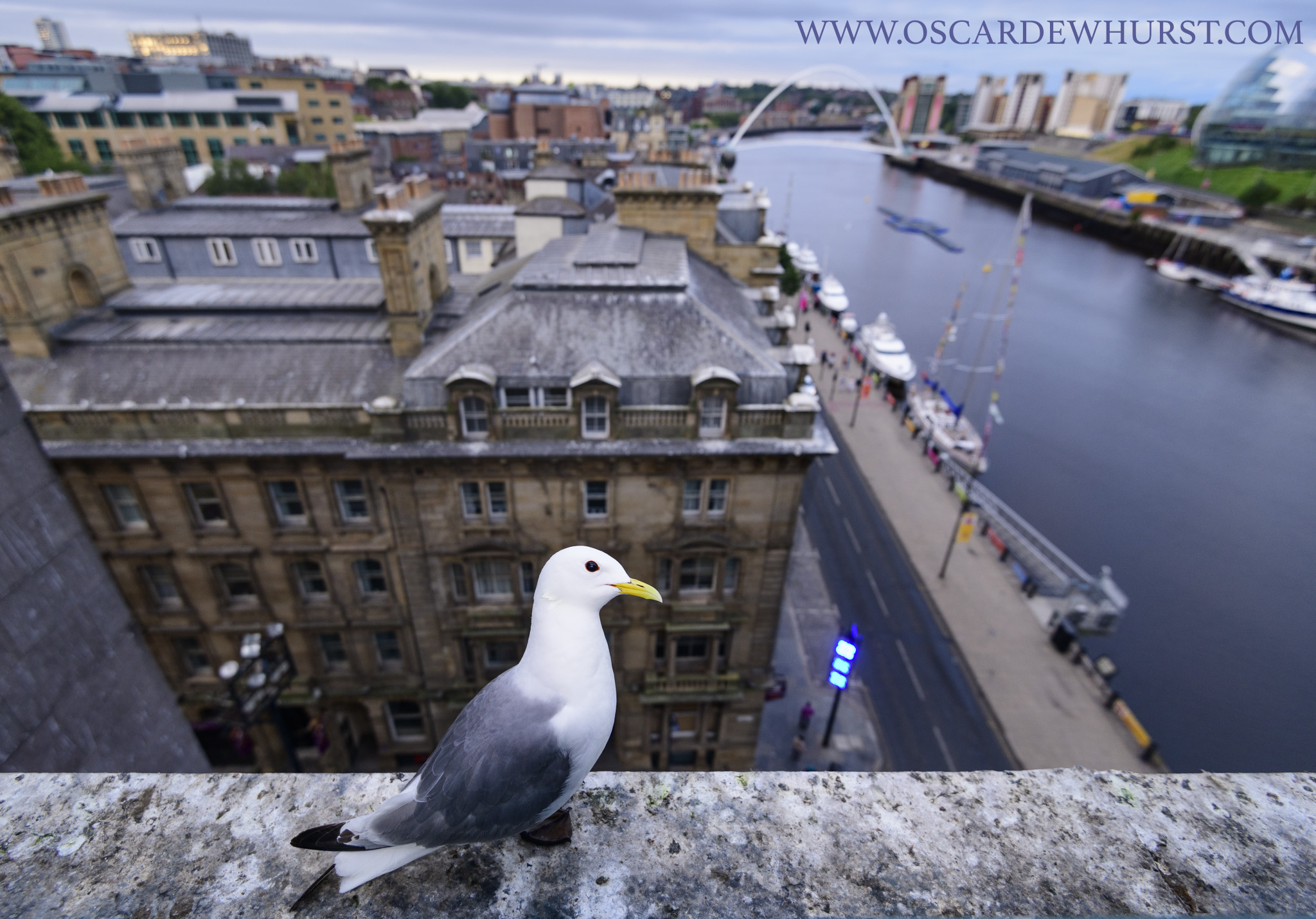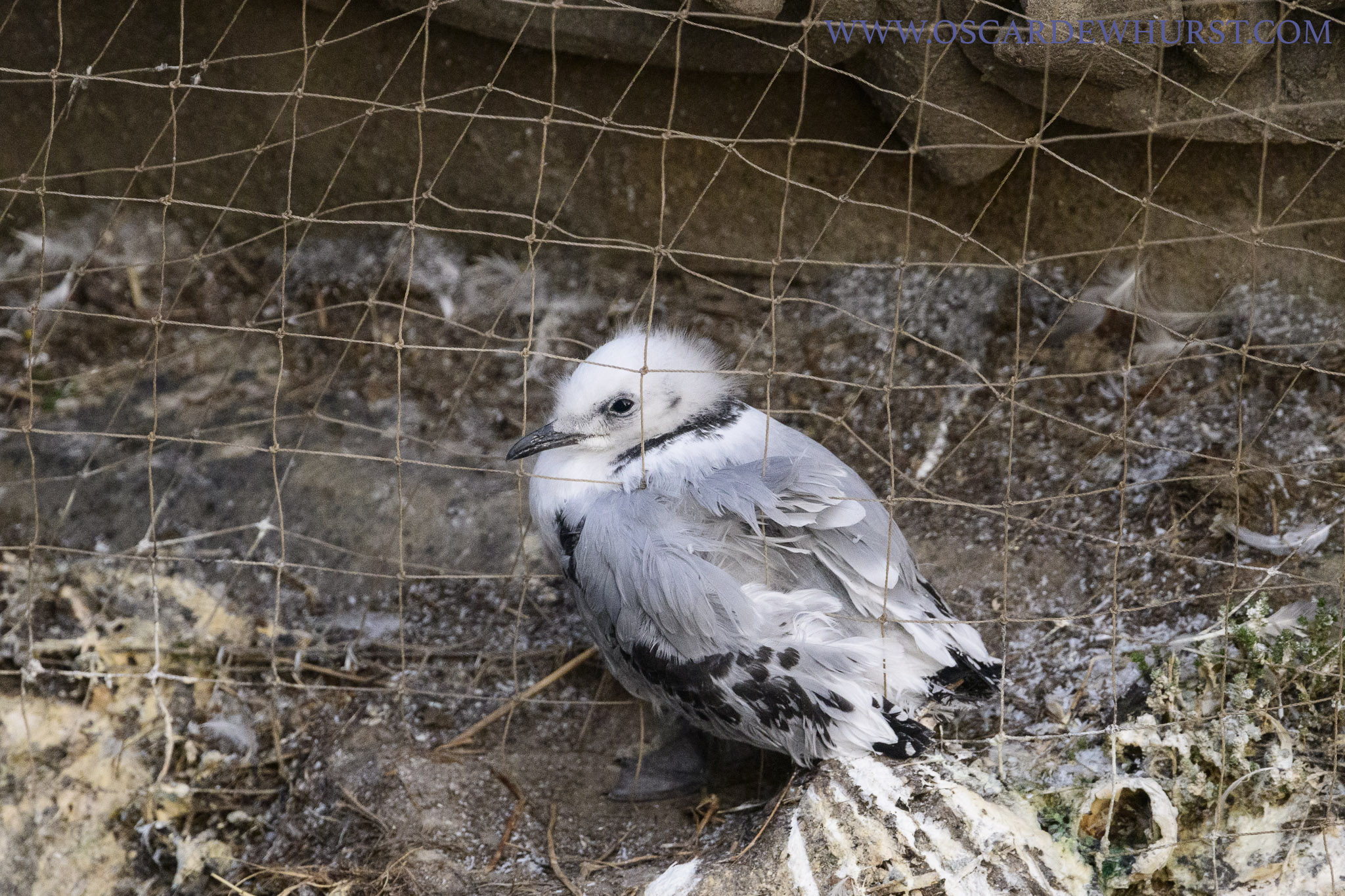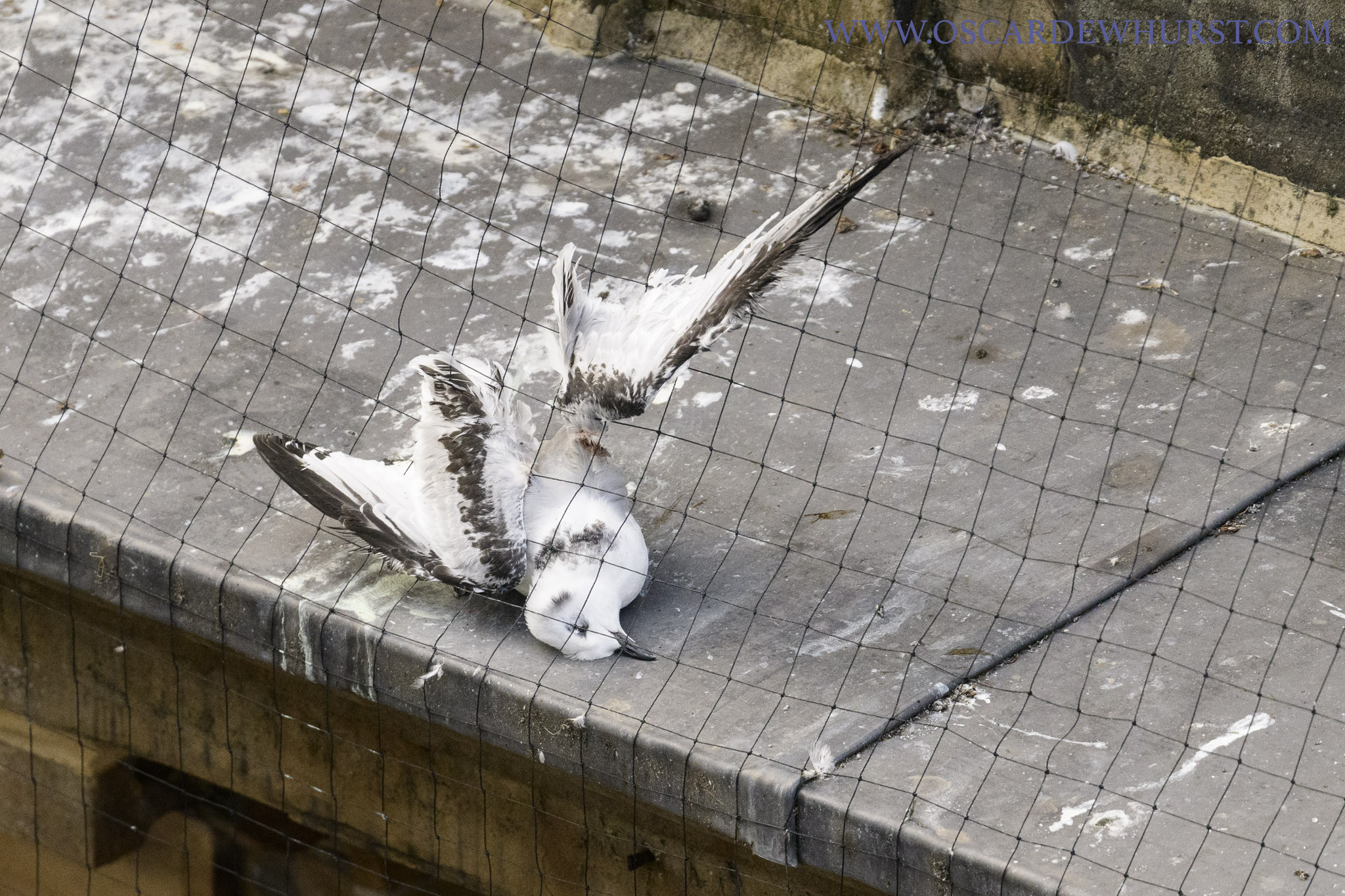Kittiwake is a species in trouble. It is listed as globally Vulnerable by BirdLife International and is also Red-listed as a UK Bird of Conservation Concern, yet this summer it faces a new threat in north-east England.
In Northumberland, Kittiwakes have nested along the River Tyne since 1949, when they colonised North Shields. In the 1960s, they spread to the Baltic Flour Mill and Co-Op warehouse, before first nesting on the Tyne Bridge in the late 1990s. Now more than 900 pairs breed on the bridge and surrounding buildings. Its location in the centre of Newcastle makes this the furthest-inland breeding colony of the species in the world. The adults feed at sea, making trips that can last up to 10 hours as they commute between feeding locations and their nests on buildings, bridges and lamp posts in the city's Quayside area.
The birds have always had their enemies, but have also always received support from locals. In early 2016, a group of Quayside hotels were determined to rid themselves of the Kittiwakes. They wanted to use an electric shock system and asked the council for permission to put wires on the bridge. One night, someone even put up spikes, although the hotel group denied any responsibility. Things weren't looking good for the birds, but to the surprise of many, complaints started flooding in about the plans to drive the birds out. More than 1,000 complaints were received, enough to persuade the hotel group to withdraw their plans and ensure the safety of the Kittiwakes. The Kittiwake Cam, a live online video feed of the birds that nest on the north face of the Baltic Centre for Contemporary Art, has been so popular that on several occasions it has crashed the Durham Wildlife Trust's website.
This year, however, the Kittiwakes have faced a much tougher challenge. Over the winter, while the birds were out at sea, netting and spikes were installed on many of the listed buildings on which the birds have traditionally nested. So far, more than 20, both adults and juveniles, died in the nets, and several others became trapped but were freed before they met the same fate. This has required the fire brigade to be called out several times, diverting precious resources away from their main responsibilities. It has proved an extremely time-consuming and difficult process to get these birds rescued, as the building owners have been evasive and, in many cases, seem to show little concern about the situation.
Putting netting up is legal, as long as it is installed outside the breeding season, but property owners have a responsibility to ensure it is maintained such that it is not a danger to the birds and must take action to release any birds which become trapped. Section 5 of the Wildlife Crime Act 1981 makes it an offence to use or leave in place any device (including netting) calculated to cause bodily injury to a wild bird. This means that once anyone responsible for installing the netting has been informed that it is causing injury and death to birds, they must act. Unfortunately, this has not been the case over the past few weeks.
The issue is more widespread than just Newcastle; a similar situation occurred in Scarborough, where Kittiwakes nest on the Grand Hotel. In previous years, the netting installed as a deterrent again resulted in injury and death to the birds. Thankfully, following a protracted dialogue led by the RSPB, RSPCA and Scarborough Borough Council, an agreement was reached whereby the netting would come down.
A petition calling for the removal the netting reached more than 11,000 signatures in the space of a week. It urges Newcastle City Council to reconsider its position with regards to the netting, in the hope that next year the Kittiwakes will not face the same problems. The netting has not stopped the birds from nesting on the buildings, as they have simply built their nests on top of the nets, leading to young birds slipping through the gaps and then growing too big to get back out. The buildings are listed and so require protection, but it is a huge disappointment to see the attitudes towards a species that should be celebrated not vilified. If deterrents have to be put in place, there must be other options that do not pose such a danger to the birds, and perhaps the loss of nesting sites of these threatened birds through deterrents could be offset via the creation of artificial ledges somewhere nearby.



No comments:
Post a Comment